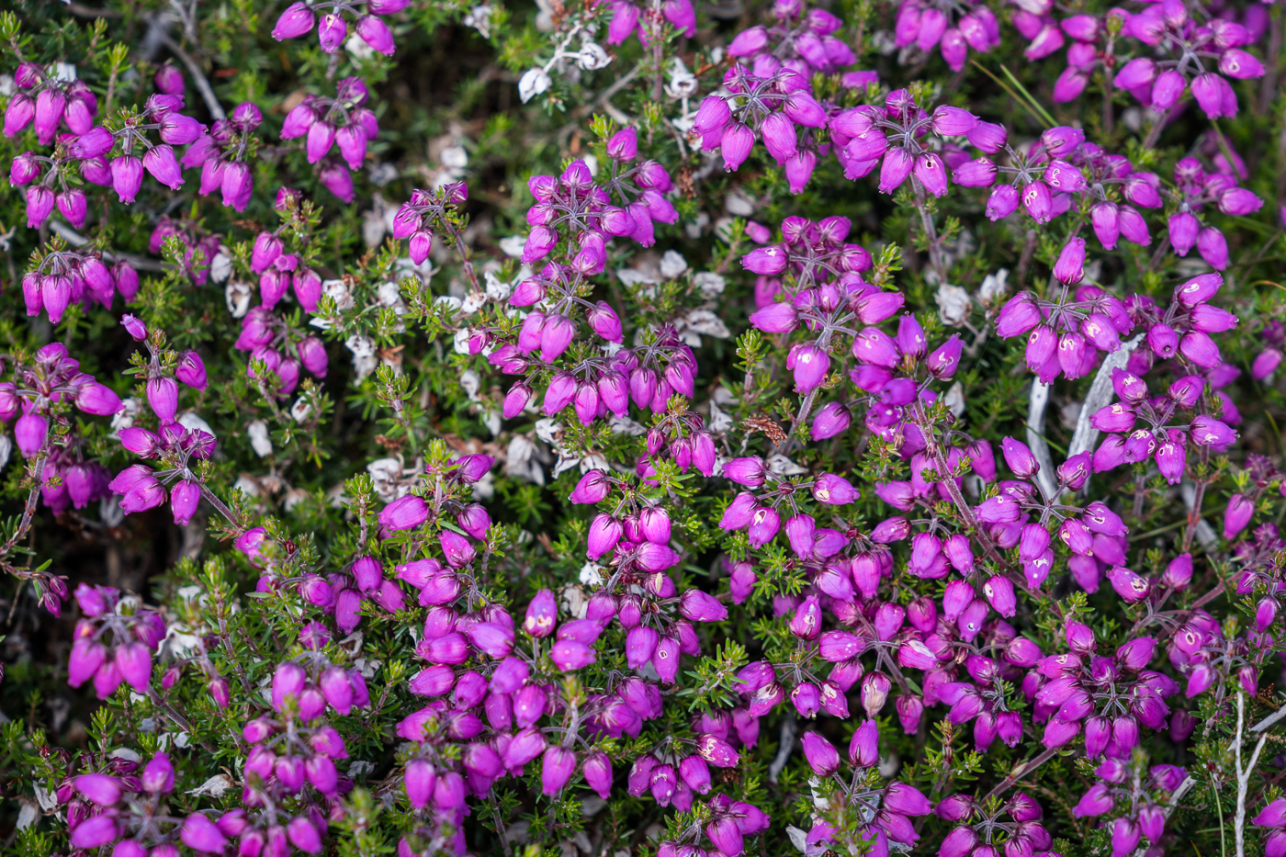Planting at Glenridding Common
Pete Barron and Tom Hayek report on planting progress at Helvellyn

During the past three years we have been working to increase the tree and shrub cover and diversity on the land we manage at Glenridding Common, including Helvellyn from the low valleys to some of the highest crags in England, with aims to benefit wildlife and sequester carbon.
Starting right up on the highest parts of the common, since we took over the lease we have committed to a 15-year objective to establish a viable population of the montane downy willow (Salix lapponum) which had decreased to only 23 remaining plants – all female and so not able to propagate. The local population of this key upland shrub now stands at around 1,500 plants!
In order to protect the genetic integrity of the population as much as possible, this incredible effort has occurred without involving commercial plant nurseries. Instead, the trees planted back out onto the crags are a combination of cuttings from the local plants (grown on by John Muir Trust and Natural England staff and our trusty local resident growers in the Ullswater Valley) and cuttings from male plants from the nearest known population in Dumfries and Galloway.

We are thrilled to have seen the willows we’ve planted not only establishing well on the crags (shown above) but now producing seed. The exciting possibility of self-seeded downy willow in the Lake District for the first time for many years could now be a reality.
There are other willow species that can thrive as a key part of healthy montane habitats and we have also grown on and planted tea-leaved willow (Salix phylicifolia), eared willow (Salix aurita) and a rare hybrid of tea-leaved and dark-leaved (Salix myrsinifolia) willows. These other willows can be planted at lower altitudes with the downy willow reserved for higher, extreme locations. One more willow species that we would like to see increase on restored summit areas is the dwarf willow (Salix herbacea) which already has a reasonable population on the summit of nearby Raise. This upland specialist grows very low to the ground, often in very exposed locations, and is vulnerable to both trampling and heavy grazing.
Elsewhere on the common, one of the other key shrub species we have been focussed on is common juniper (Juniperus communis). An area of roughly 20 hectares is fenced from stock grazing as part of an agri-environment scheme, largely to protect and permit expansion of the large existing juniper stand on the common. For three years, the area has been more or less free from grazing with remarkable results in terms of expansion of the juniper and increases in the depth of vegetation. This area provides an important dense habitat for nesting birds, a seed source for birds and small mammals in winter and a food source for a number of specialist micro-moths and some larger moths such as juniper carpet (Eupithecia pusillata). In addition, it helps to slow water flow in this flood prone area.
The juniper is expanding (albeit slowly as you would expect from this species) and we have seen better recovery in this fenced-off area from our annual monitoring for growth and expansion of coverage. Unfortunately, even in those areas starting to recover, there is another threat to the habitat from the funguslike juniper disease Phytophthora austrocedri (shown below) which is present on the common.

We follow the most up-to-date advice to avoid planting juniper or other trees from nurseries within the stands to avoid the risk of further disease introduction and spray our boots with disinfectant when entering and leaving the exclosure. If you walk anywhere where there is juniper present, it’s always a good idea to scrub the soles of your boots with disinfectant when you get back to the car to prevent transferring any disease to other areas.
We are trying to combat this disease threat by only planting trees which have been ‘home grown’ from local stock and in an environment unlikely to have disease. As well as juniper, we are growing on hawthorn, hazel and aspen in this way (the latter from rhizome cuttings from selected higher altitude trees) to boost the diversity of habitat in this part of the common. However, juniper grown from on-site seed is very slow to develop and a minimum of four years growing is required for it to get strong enough for planting out.
Photographs by Pete Barron. Picture at the top of the page shows dwarf willow on Helvellyn's summit plateau.


